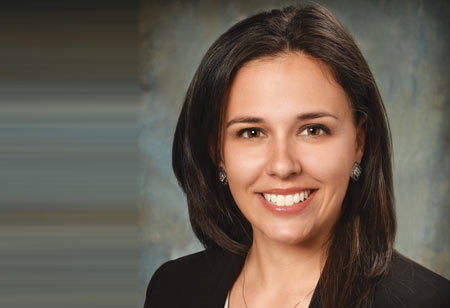Thank you for Subscribing to Healthcare Business Review Weekly Brief

How COVID-19 is Fueling Health Care Innovation
Healthcare Business Review
The health care industry is always evolving to meet the changing needs of patients and their environment. Most recently, the COVID-19 pandemic has fueled innovation and forced health care providers to evolve their services – including the use of new technologies.
Today, providers are offering remote patient monitoring, an at-home solution that advances the standard of care for many medical conditions. Through innovative technology, such as fitness trackers, scales, glucometers or blood pressure cuffs, remote patient monitoring regularly assesses patients outside of a clinical setting. With this technology, biometric data can be recorded and transmitted to a care team in real-time.
While patients can manage their health with this technology on their own at home, the most comprehensive method is with the support of an integrated team of clinicians. InspiraHealth createdan innovativeprogram in 2019, Inspira Health+ Technology-Assisted Care Management, that provides around-the-clock monitoring and personalized health actions to help patients monitor their health condition from home.
Understanding Remote Patient Monitoring
Remote patient monitoring benefits both patients and health care providers.
By providing remote monitoring tools, patients are empowered to take control of their health, and learn more about ways to improve lifestyle choices impacting their condition. These lifestyle changescan drastically impact patients, as most chronic diseases can be prevented, resolved, or improved with patient behavior adjustments.
On the other hand, remote monitoring helps highlight patient behaviors such as daily health checks, exercise, diet, etc., that can help avoid exacerbating the illness and prevent “rising risk.” Since patients know their care team is receiving and reviewing their data in real-time, this type of program improves patient accountability.
Remote monitoring programs expand access to quality health care for patients with socio-economic barriers or those who live in more rural locations. With tools that can be used from home, patients don’t have to travel to receive quality care and can still receive real-time guidance remotely.
Evolving Patient Care in a Pandemic
In 2020, the pandemic introduced an additional need for remote patient monitoring. As COVID-19 became more prevalent across the country, including southern New Jersey, concerns increased around hospitalizations and adequate capacity to best treat patients. Our hospital system began to think of ways to quickly and safely discharge COVID-19 patients to make room for new patients.
While the original version of Health+ already included access to a wireless pulse oximeter that automatically sends data in real-time to a care team, our team took it one step further to provide additional support for COVID-19 patients being discharged.
In evolving the program for use during the pandemic,
we expanded the suite of tools with a thermometer to better monitor for COVID-19 symptoms and we implemented a two-part post-discharge program for patients. COVID-19 patients meeting program criteriaare enrolled into the program and receive their first at-home virtual visit with a provider the following day.Simultaneously, the patient begins to use the Health+ remote monitoring kit including a thermometer and pulse oximeter so a care team can closely monitor their temperature and oxygen levels in real-time and notify physicians immediately with any issues or concerns. With around-the-clock monitoring and personalized health actions, patients are able to recover safely athome.
The innovation of remote patient monitoring during COVID-19 has proven two important outcomes. First, care teams were able to quickly identify a very small number of patients who were decompensating at home and advise them to seek acute care. Second, length of hospital stays was reduced in many cases, and most patients had stronger at-home recoveries leading to reduced hospital readmission for COVID-19. In fact, a patient who used Health+ for her COVID-recovery was able to cut her hospital stay in half. She was able to safely recover athome with supplemental oxygen for two months while staying in close touch with her pulmonologist who originally treated her at the hospital.
The Future of Remote Patient Monitoring
Given the positive results of Health+ and remote patient monitoring programs at large, will this type of care become part of the new normal? Yes. Looking ahead, there are several use cases for these tools beyond COVID-19 and could symbolize a new cornerstone for the way health care is delivered.
Remote monitoring programs can expand beyond hospitals and primary care to skilled nursing facilities, with the goal of reducing hospital readmissions.The pandemic has shown the heightened need to provide expert and specialized care for vulnerable populations.Patients who are transferred from a hospital to a skilled nursing facility can use a similar program to ensure continuous patient care in their home environment upon discharge.
"The pandemic has shown the heightened need to provide expert and specialized care for vulnerable populations"
As telemedicine continues to increase in popularity, remote monitoring can become an asset to monitoring biometrics across all medical disciplines. In addition, this can further drive a hospital-at-home model. Widely adopted in countries such as England, Canada and Israel, this model of care has proven to improve patient outcomes as well as reduce health care costs.
While the health care industry – nor anyone – was prepared for COVID-19, it has fueled the growth and innovation to elevate health care service delivery. With new technological solutions such as remote patient monitoring, our network along with many others can continue to provide high quality care for those who need it most as we continue to navigate COVID-19 and any future challenges that may come our way.









